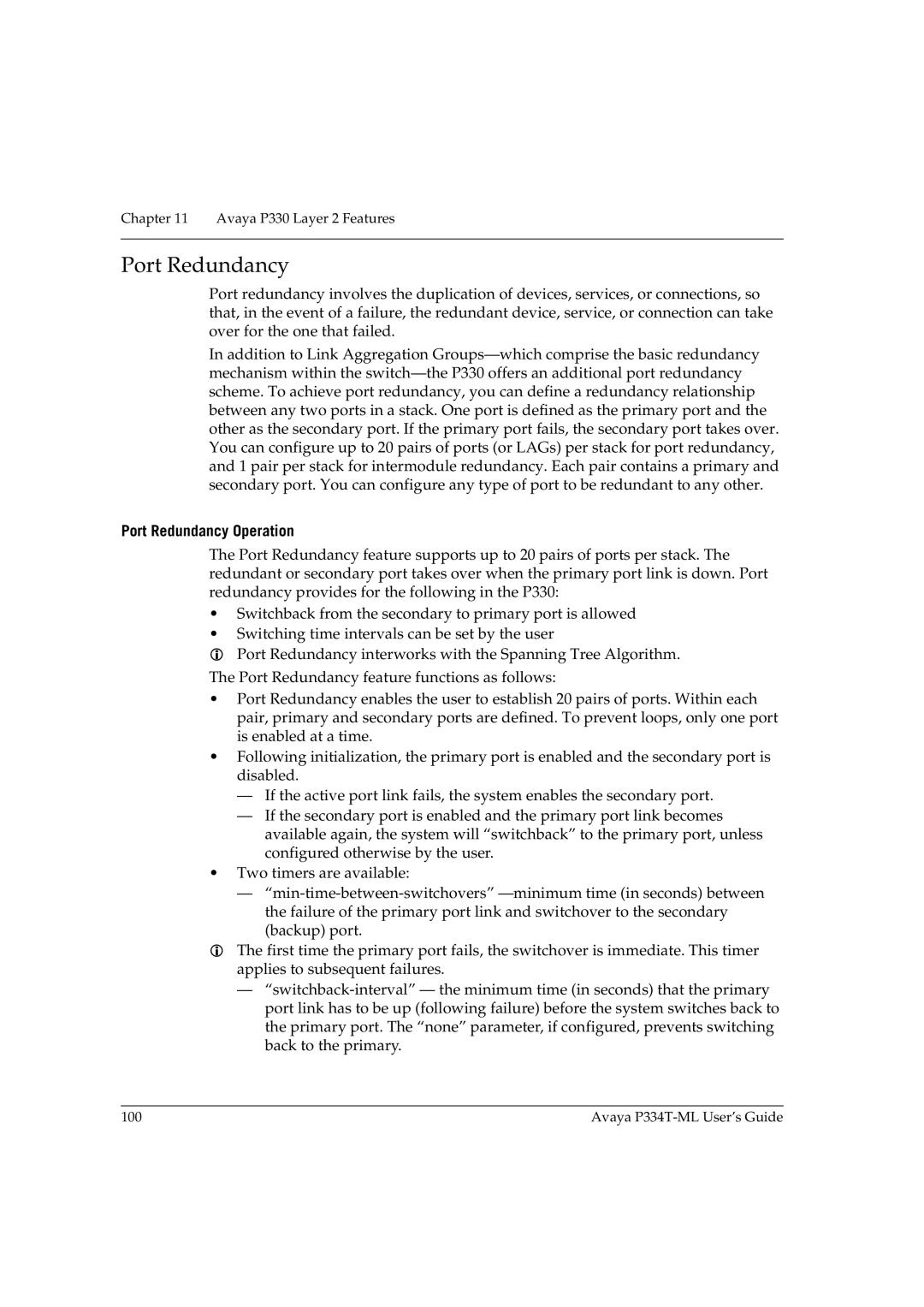
Chapter 11 Avaya P330 Layer 2 Features
Port Redundancy
Port redundancy involves the duplication of devices, services, or connections, so that, in the event of a failure, the redundant device, service, or connection can take over for the one that failed.
In addition to Link Aggregation
Port Redundancy Operation
The Port Redundancy feature supports up to 20 pairs of ports per stack. The redundant or secondary port takes over when the primary port link is down. Port redundancy provides for the following in the P330:
•Switchback from the secondary to primary port is allowed
•Switching time intervals can be set by the user
Port Redundancy interworks with the Spanning Tree Algorithm.
The Port Redundancy feature functions as follows:
•Port Redundancy enables the user to establish 20 pairs of ports. Within each pair, primary and secondary ports are defined. To prevent loops, only one port is enabled at a time.
•Following initialization, the primary port is enabled and the secondary port is disabled.
—If the active port link fails, the system enables the secondary port.
—If the secondary port is enabled and the primary port link becomes available again, the system will “switchback” to the primary port, unless configured otherwise by the user.
•Two timers are available:
—
The first time the primary port fails, the switchover is immediate. This timer applies to subsequent failures.
—
100 | Avaya |
